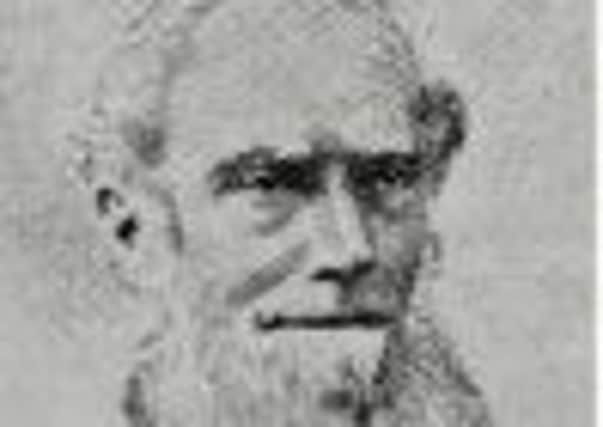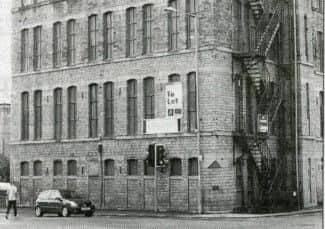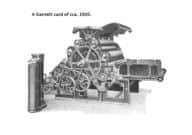From the Stour and the Wharfe


The two companies which we discuss this week were founded by migrants from Kidderminster on the River Stour in Worcestershire and Otley on the banks of Yorkshire’s mighty River Wharfe.
On Tuesday March 18 at Cleckheaton Library, Spen Valley Civic Society will present brief histories of two local organisations which helped to create the fame, wealth and employment of The Spen Valley. Please note that, in response to previous weeks’ attendance patterns, the viewing time has been amended to 10.30am-6pm.
Advertisement
Hide AdAdvertisement
Hide AdIf any reader of the Guardian - whether from personal memory or from searching family scrapbooks and/or photo albums – can add to what is known of the histories of Cooke, Sons and Co (carpet makers of Liversedge) or P and C Garnett (engineers of Cleckheaton), please come to Cleckheaton Library on March 18, write to Margaret Heward, Spenborough Guardian, 17 Wellington Road, Dewsbury WF13 1HQ or e-mail to [email protected].


Cooke, Sons and Co
William Peabody Cooke migrated from Kidderminster in Worcestershire to Heckmondwike in 1795 to start making rugs and carpets at a small mill thought to have been close to Upper Chapel.
He built up a successful business which he divided in 1825 to create separate units for the making of “Brussels” and “Kidderminster” carpets. William gave the controlling share of the “Brussels” business to his ambitious son, Samuel, who promptly moved the undertaking to an old mill in Millbridge, Liversedge: and William continued to make the Kidderminster rugs and carpets in Heckmondwike.
Samuel Cooke, trading as Cooke, Son and Co from the factory at the triangle between the Bradford, Leeds and Wakefield roads in Liversedge (parts of whichstill stands), was so successful that by 1833 - just eight years after starting - he was able to open a six-storey warehouse and sales office in London!


Advertisement
Hide AdAdvertisement
Hide AdIn 1834 the government of the day appointed a Royal Commission to examine the employment of Children in Factories: Samuel Cooke’s submission to the Commission reveals a rare insight into working conditions in the Spen Valley.
Cooke then employed 27 people (eight males and 19 females) excluding weavers and winders who were home-based, outworkers on piece rates: the three highest paid males earned 20s 6d for a 77-hour week and the highest paid female received 7s for the same hours.
The payroll included five girls and one boy under the age of 12: the girls received 2s 10d and the boy 3. for a six day, 44-hour week and six days annual holiday (unpaid).
The business passed through the hands of William Peabody Cooke’s son, grandchildren and great-grandchildren before being taken over by Blackwood Morton Limited of Kilmarnock to trade as BMK Carpets Limited. in 1938. The Millbridge factory complex was closed down in 1979.
They coined a noun and a verb!
Advertisement
Hide AdAdvertisement
Hide AdBy setting up their factory “Wharfe Works” in Cleckheaton in 1851, two migrant brothers from the River Wharfe in Otley produced not only saw-tooth wire and textile machinery but added two words to the English language – garnett (both noun and verb) and garnetting (noun)! To garnet is to reduce a textile remnant to its fibrous state for re-cycling.
The father of Peter and Charles Garnett, also a Peter, was a wealthy paper-maker who, wishing to provide his sons with a livelihood without their intruding into his business, purchased a patent for making a saw-tooth wire to be wrapped around rollers for breaking up textile yarns and fabrics for re-processing.
Little is known about the two Garnett brothers – perhaps because one was short lived and never resided in Cleckheaton and the other lived in the town for just 10 years.
In 1865, the surviving brother, Peter, sought retirement and appointed John Henry Leather as a partner and resident manager of P and C Garnett: John Leather bought out the founding partner in the 1890s.
Advertisement
Hide AdAdvertisement
Hide AdIn 1897 Garnetts opened a factory in Manchester (soon relocated to Rochdale) and another in Roubaix (France) in 1906: in that same year they acquired the Cleckheaton textile engineers, W Shepherd and Sons and in 1937 bought out William Bywater of Leeds.
The company became part of the Spooner Industries Group in 1968 and traded as Garnett-Bywater Limited until 1985.
P and C Garnett Limited was an early British pioneer of profit sharing, company pensions and the “ideas box” – all launched in 1903. Garnetts took on an apprentice pattern-maker (joiner) in 1890: on completion of his five-year indenture, Robert Thompson returned to his native Kilburn where he became better known as “The Mouseman”.
John Henry Leather is remembered for bringing the original, corrugated-iron St Luke’s Church to Cleckheaton in 1879 and for helping to replace it with today’s familiar landmark a few years later.